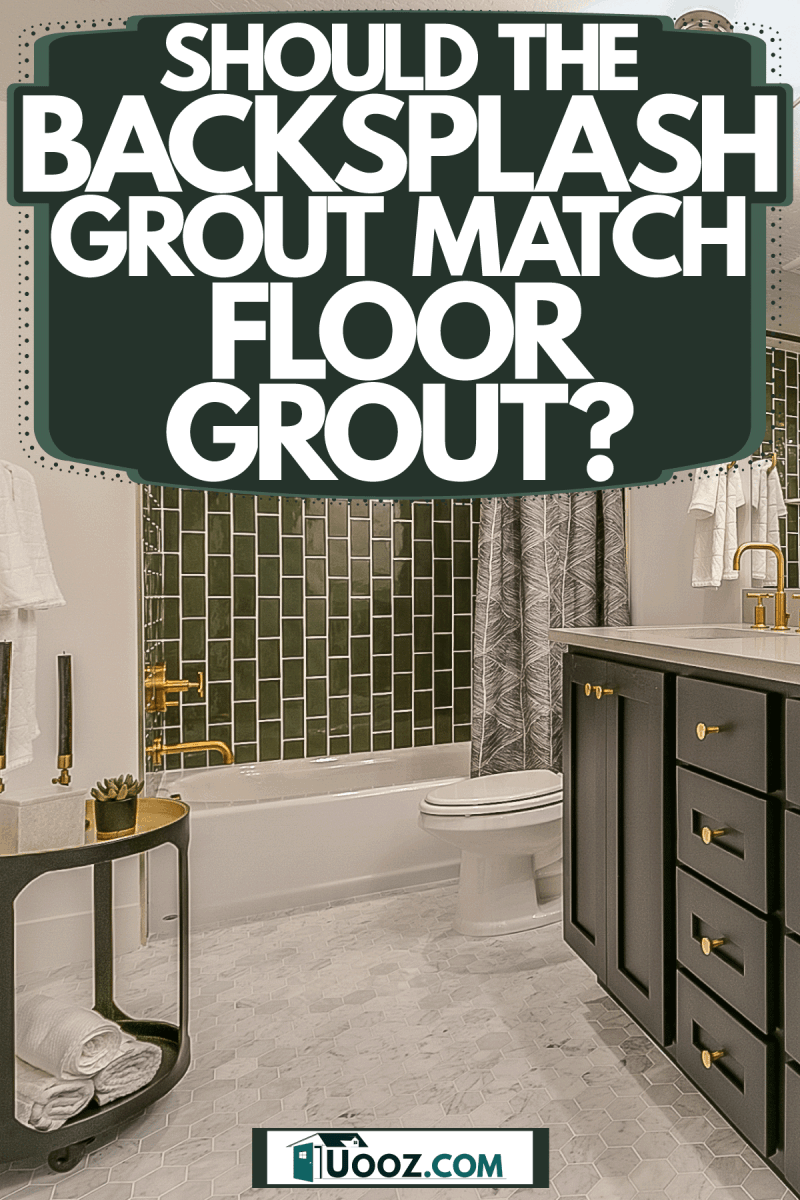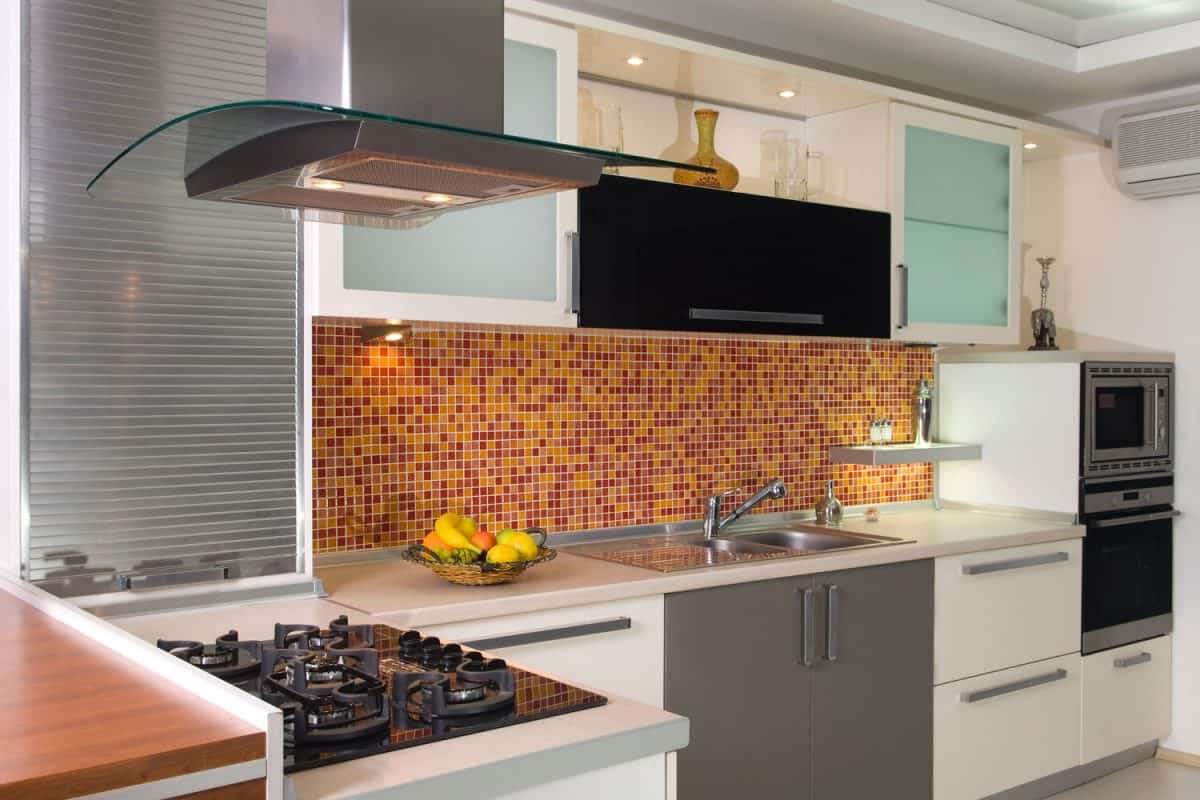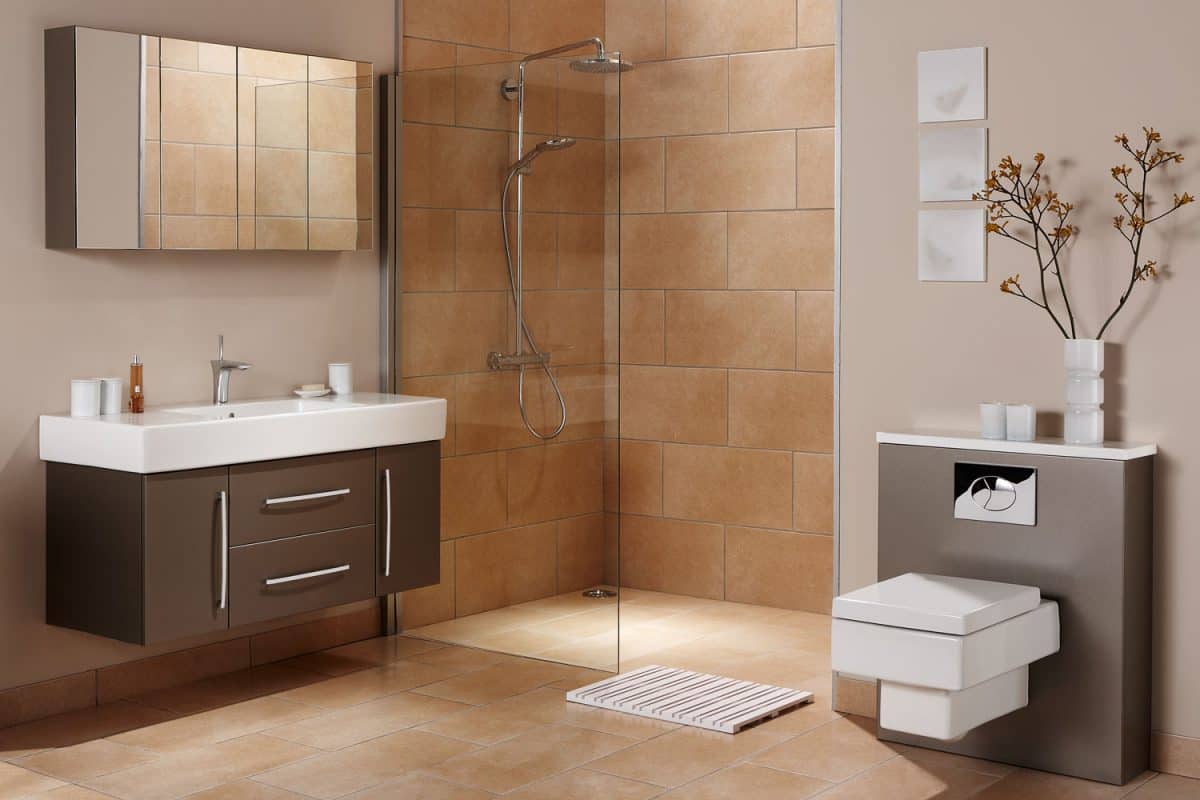A backsplash is one of the essentials for any kitchen or bathroom, and it can look gorgeous too. But it typically requires its own grout, just like your floor tiles. So, you’re probably wondering how to style your backsplash and what relationship it has with the floor. It may seem like a lot, but your backsplash will protect your walls from water damage and make a serious design statement. We have researched if your backsplash grout should match the floor grout to get some style suggestions for you.
It is possible for the grout on your backsplash to either match or contrast with the floor grout. Generally, your backsplash should agree with the counters instead of the floor. But the grout is only the sealer between each tile, meaning it isn’t the dominant color on the backsplash. So, the grout between your tiles can actually tie the floor and backsplash together or contrast the floor to bring more focus back to your countertops.
Your backsplash is often considered an extension of the counters. But thanks to grout, you can also coordinate the backsplash with the floor. You’ll just have to learn what kind of grout is best for you. Keep reading to learn how to select the right colors, style, and material for your home.

How do you choose a grout color for backsplash?
Adding grout to your backsplash is always necessary. Grout will protect the edges of the tiles, and it fills in the gaps to keep them from moving around. Grout is a mix of cement and water, so it’s highly durable.
Click here to find this peel and stick backsplash on Amazon.
You can find backsplashes that can simply be peeled off and stuck to the wall. However, most of the time, a quality backsplash will use actual tiles. This should allow you to change the color of your grout as you please.
Click here to find this unsanded and pre-mixed tile grout on Amazon.
Unfortunately, the grout itself isn’t sold in a variety of different colors. You’ll have to select a kind of paint that will adhere to the grout. Then, you can start to focus on basic color relationships.
Most of the time, you’ll be matching your backsplash grout with something else in the room. That’s because your backsplash should serve the entire home and not just its own tiles. The same rule applies to those tiles, which may not be right for any interior design.
Start with the broader colors in your home, and work your way down to the backsplash itself.
Use the Overall Style
Yes, the backsplash can have its own personality, unlike most other accent pieces. But remember that any fixture or décor in a room should still continue to agree with the overall style of the home.
For example, you don’t want an elaborate, artsy backsplash in a sleek and modern kitchen. Minimalist rooms ask for a lot of neutrals like gray and black. You don’t want flashy yellow grout on your backsplash, even if it suits the tiles. Otherwise, the backsplash will stick out like a sore thumb. As such, following the established colors of the overarching interior design will begin to guide you.
Understand the Room

One of the first things you should consider is that a backsplash is mainly found in the kitchen or bathrooms. Both of these rooms are unusual because they tend to have a unique style from the rest of the home. And that is because kitchens and bathrooms have special purposes, which give them unique problems. This basically means that your grout color is going to be affected by the personality of your kitchen and bathrooms in particular.
You can read 6 Best Types of Tiles for Kitchen Floors.
These rooms are usually smaller than the other ones in the home. Most rooms have darker floors that brighten towards lighter ceilings. But in order to balance out the cramped feeling in kitchens and bathrooms, they use floors that are much brighter than usual. That’s why most of the time, you’re going to be comparing your backsplash to light floors and darker counters.
You’re also likely to find that the kitchen or bathroom has tiled flooring. That’s because any kind of wood, including engineered wood, is usually only protected from water damage at the surface level. They can still build up dangerous moisture underneath the finish. In other words, the floor is probably tiled, and it will definitely need grout, just like the backsplash.
Nearby Neighbors
Once you know the backsplash fits your overall interior design, you have to understand how the backsplash ties in with other specific fixtures and accents in the room. This usually means you’ll be comparing the backsplash to the countertops, the floor, or kitchen cabinets. You can read Should Floor and Wall Grout Match?
Your backsplash is already an extension of the counters, so it’s usually best to coordinate those two together. Either way, you will typically have three primary options when you coordinate the backsplash colors with other fixtures.
- First, you can use neutral colors, which are endlessly flexible but sometimes boring. Neutrals allow your backsplash to remain relatively hidden.
- Secondly, you might want to create a noticeable contrast between the backsplash and another fixture. This will draw attention towards one or the other, based on the surroundings.
- Lastly, you can use colors that agree, being two or three shades apart from the neighboring fixture.
Should grout be darker or lighter than the tile?
If you finally have the color of your grout selected, you can begin to choose the brightness of the grout to serve the backsplash tiles themselves. The same color relationships that work with the surroundings will also apply to the backsplash tiles.
If you use matching grout, the tiles will be highlighted because they have no borders. But keep in mind that any pattern would naturally be lost. Still, this can be useful if you need to deliberately fit your backsplash with an interior design that shouldn’t look too busy.
If you use grout that is lighter than the backsplash tiles, then the tiles will pop. Keep in mind that this would also put more focus on the countertops because they are so close by.
When you have grout that is darker than the backsplash tiles, any patterns on the tiles are going to jump out. This can also create serious contrast for flashy tiles, making them appear even brighter.
Can you use floor tiles on the wall?

Sometimes, it is actually possible to use floor tiles on a wall. But it doesn’t usually work both ways. That’s because any tile is considered a floor or wall tile based on its durability. Any tile that is durable enough to withstand foot traffic can be labeled a floor tile.
The trick is that floor tiles tend to be heavier because they are supposed to survive frequent wear and tear. Meanwhile, wall tiles don’t have a lot of stress. So, you’d just need to find an adhesive that could support the weight of a so-called floor tile on your walls.
Summary
A backsplash can add a lot of personality to your home, but that means it will also require a bit of planning. It’s important to understand the relationships your backsplash can have with the rest of your interior style. Now that you know how the backsplash will interact with the floor and how coloring your grout will affect the room, you’ll have no problem striking the perfect balance.


